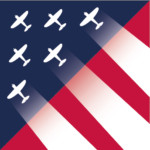Ninth Air Force and Close Air Support after Normandy
Close air support, like air power itself, came of age in World War II. Before the war, air power theorists generally focused on bombers, whose long range and heavy payloads could threaten distant enemy industrial centers. They might even win future wars without ground forces. That turned out to be a dream. But as World War II evolved, fighters began to promise new horizons for American air power advocates.
The idea of close air support — fighters working closely with front-line troops — had been largely ignored in the inter-war years. But the demands of combat forced new ways of thinking.
In Europe after D-Day, Eighth Air Force bombers were sometimes pulled from their strategic duties and given the tactical job of clearing the way for troops on the ground. American and British bomber generals didn’t like the idea and there were tragic consequences when bombs fell short. But the generals and their superiors valued the idea of a separate air force, and were less enthusiastic about fighters that supported ground forces.
Even commanders of Allied tactical air forces — the U.S. Ninth Air Force and the British Second Tactical Air Force — didn’t always fully understand the contribution of their bomb-carrying fighters, which came to be known as fighter-bombers. This reflected a shortage of analysis that was caused in part by the fast pace of combat across France after the post-D-Day breakout at Saint-Lo. That, in turn, led to a doctrine of close air support that, in retrospect, was only partially developed.
But there was little question that close air support helped make the Saint-Lo operation a success. After heavy bombers struck a devastating blow to German defenders at Saint-Lo in July of 1944, supporting Ninth Air Force fighter-bombers struck quickly and successfully.
Flexibility and innovation, and close personal relationships among top air and ground commanders, helped alleviate some of the complexities of close air support, which was more difficult than such other tactical-air missions as air superiority and interdiction.
Good weather, powerful Allied armies, air superiority, and a retreating enemy also helped make close air support a winner in the summer months following D-Day.
But as the Allies approached Germany’s West Wall in the fall of 1944 their advance stalled, and so did close air support. German troops, fighting on their own soil from strong, dug-in positions, densely forested terrain, and long supply lines were all factors in the Allied slow-down. None of the old close air support methods seemed to work, and Allied tactical air commanders weren’t coming up with any new strategies.
Then, on Dec. 16, 1944, Germany counter-attacked in a last-ditch effort that became known as the Battle of the Bulge. Allied tactical air commanders were forced to fight defensively. Low-lying clouds tied their hands as the Germans advanced through Belgium. Allied air and ground commanders were stunned by the unexpected German onslaught.
But when the weather cleared on Dec. 23, 1944, tactical, strategic and transport aircraft rushed in, helping ground forces to turn the tide. By mid-January, 1945, the German attack had failed and the way was cleared to the defeat of Germany on May 8, 1945.

Photo credit: Luis Drummond

